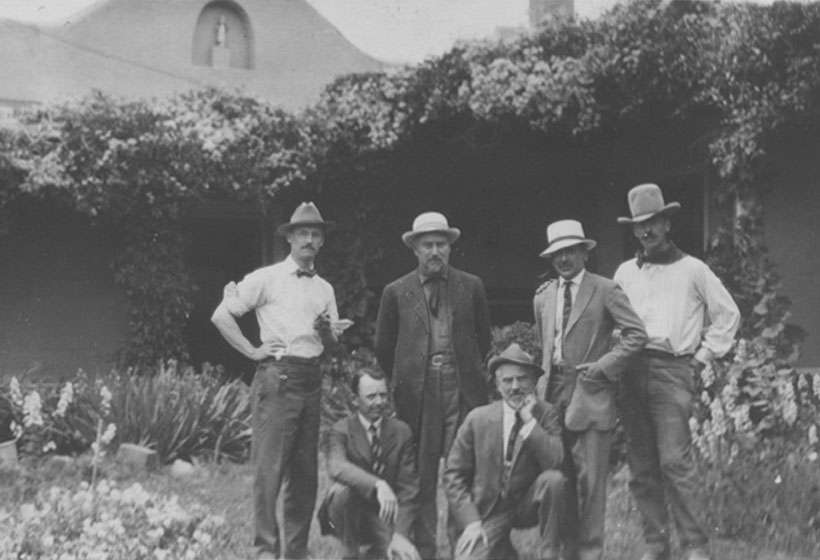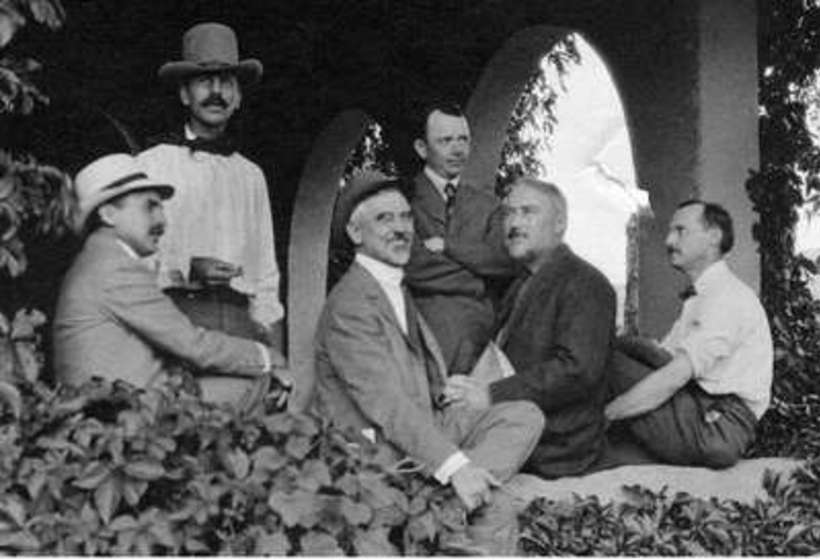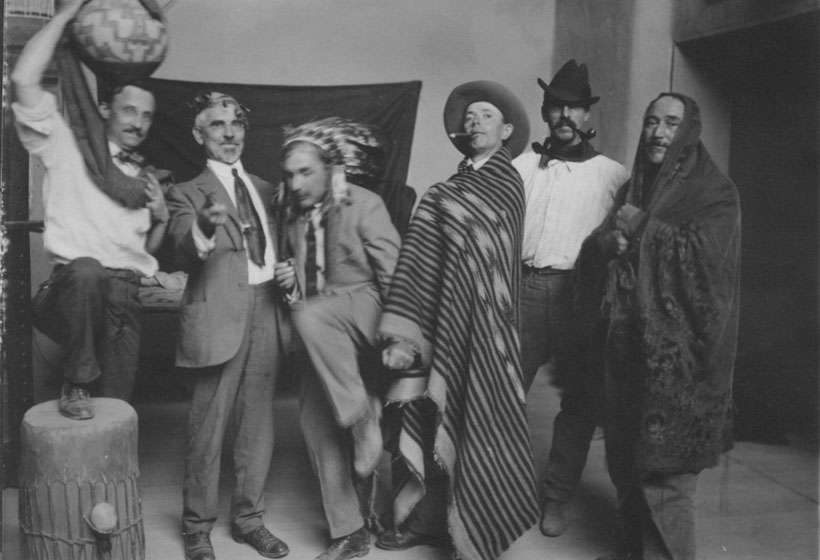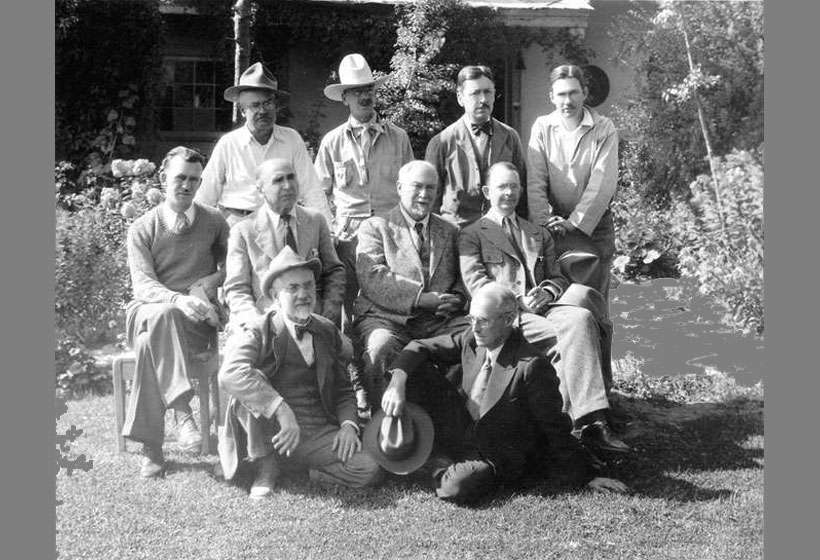Taos Society of Artists / About
About the Taos Society of Artists
In September of 1898, Ernest Blumenschein and Bert Phillips, two young artists from New York, discovered the beauty and fascination of the Taos Valley of northern New Mexico. Both studied in France where in 1894 they met J.H. Sharp who told them about his recent visit to Taos. Their experience with art colonies in Europe stimulated a desire to establish such a colony in Taos. There the landscape, the Native American and Spanish cultures, and the spectacular light caused Phillips to say to Blumenschein, "For heaven's sake, tell people what we have found! Send some artists out here. There is a lifetime's work for twenty men." Couse was their first convert, arriving in 1902 and returning every year thereafter.
By 1915, six professional artists from the East had made Taos a focus of their work. In that year they formed the Taos Society of Artists, sending circuit exhibitions of their paintings across the country and exposing audiences to new cultures, new visions, and a new landscape. This put Taos "on the map" for art and tourism, making it one of the most important art colonies in America. The Society lasted until 1927, by which time there were 12 active members which included: Bert Phillips, Ernest Blumenschein, Irving Couse, Henry Sharp, Oscar Berninghaus, Herbert Dunton, Julius Rolshoven, Walter Ufer, Victor Higgins, Martin Hennings, Kenneth Adams, and Catherine Critcher. Prompted by the reputation of the Taos Society of Artists and later enhanced by the presence of the art patron, Mabel Dodge Luhan, the art community expanded rapidly. Today it remains a vital and ever growing artists' milieu.
Taos Society of Artists archive, research center progresses
An archive and research center focusing on the Taos Society of Artists (TSA) is moving forward into reality, spearheaded by The Couse Foundation, the non-profit organization that owns and operates the Couse-Sharp Historic Site.
We acquired the building that long housed the renowned Mission Gallery and incorporates the last remaining remnants of the home of Joseph Henry Sharp. We've transformed the building into an archive and research facility devoted to all of the TSA. It will be home for historic documents, photographs, scholarly papers focused on the TSA and its individual members, Native art and ethnographic objects collected by several of the artists, a research library, and representative artwork.
A centerpiece is the extensive E. I. Couse archive, and several scholars have already donated working papers relating to their research on the Society. Other scholars and descendants of the TSA have promised future transfers. The archive consolidation and increased access are envisioned to result in significant new scholarship.
The research center and museum facility also include an exhibition gallery, curatorial and conservation space, and offices.
Many factors of scheduling and funding will affect the development of the TSA Archive and Research Center, but we plan to open the facility fully in Fall 2022.
Click here for more information about the TSA Archive and Research Center.
Statement of Purpose
Through its archives, collections, and programming, the Couse-Sharp Historic Site preserves and interprets Taos’ crossroads of cultures, promoting and facilitating research, education, and new perspectives on the Taos Society of Artists, early artists of Taos, and regional and Indigenous communities in relation to the greater story of the multicultural American West.









